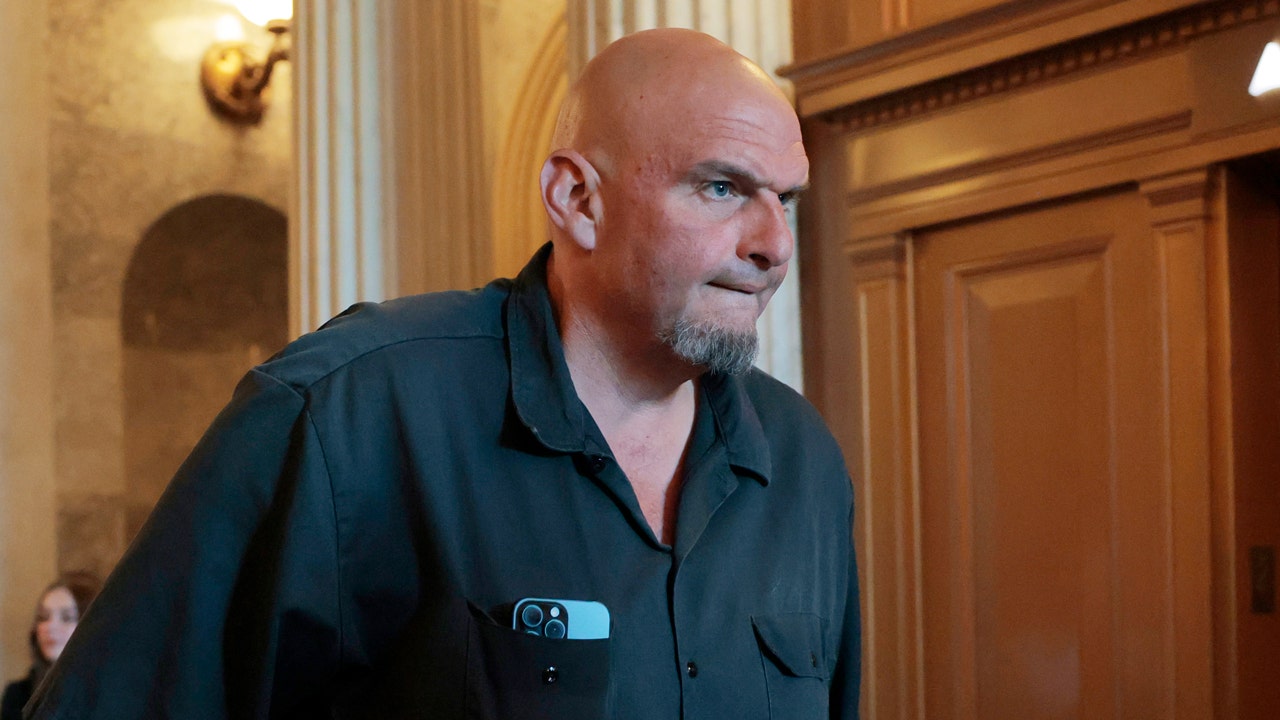Mark Twain (real name Samuel Clemens) continues to make news, whether in unabashed reverence by comedian Conan O’Brien as he accepted this year’s Mark Twain Prize for American Humor, or in defamation by countless school boards who have banned The Adventures of Huckleberry Finn, which uses the “n-word” 219 times.
Huck, first published in America in January 1885, also inspired Percival Everett’s wildly successful 2024 novel James, a POV re-pivot focusing on Huck’s black friend and escaped slave, Jim. In comedy and contemporary literature, Twain’s shadow remains a long one, 115 years after his death.
For years, biographer Ron Chernow has been wrestling with Twain’s shadow, and now his latest effort, Mark Twain, at well over 1,000 pages, leaves no archival stone unturned. As he has done with J.P. Morgan, John D. Rockefeller, Alexander Hamilton, George Washington, and Ulysses S. Grant, Chernow, 76, takes five to eight years to complete his meticulously researched biographies.
But for Twain, I did have my doubts. If you’re familiar with Chernow’s work, you understand that banking and politics appear to be his comfort zones, and I wondered if his choice—a fierce satirist enamored with teenage girls—had been affected by how Twain had helped former president Grant with his memoirs. That story was laid out wonderfully by Mark Perry’s 2004 dual bio Grant and Twain.
When it comes to Twain, so much has already been documented. As Chernow notes in his acknowledgments, Twain, upon his death in 1910, left behind hundreds of unpublished manuscripts. The Mark Twain Papers over at Berkeley has already scoured through thousands of pages, organizing Twain’s autobiography into three volumes, and NewSouth Books saw a market large enough to publish Huck Finn without the n-word.
It’s worth noting that, regarding Huck’s Jim as a character, Chernow is succinct: “Whatever the shortcomings of Twain’s presentation of Jim, the Black man emerges as the morally superior figure in the story, surrounded by an appalling menagerie of whites who cheat, scheme, lie, and kill.”
Mark Twain is so much more than the eccentric writer who wrote Innocents Abroad, Huck Finn, and Tom Sawyer; he is a cultural institution. Raised in “sleepy” Hannibal, Missouri, Twain watched as the small town came to life whenever a steamboat chugged its way up and down the Mississippi River. He dreamed of being a steamboat pilot, and it was this profession Chernow highlights where Twain found the most peace and freedom, writing a distant second. “In truth,” wrote Twain, “every man and woman and child has a master, and worries and frets in servitude; but in the day I write of, the Mississippi pilot had none.”
When not on the river, Twain, son of a distant, cash-strapped father—who died when Sam was 11—and adoring mother, became a prankster around town, ever craving the attention it brought. Eventually, young Sam settled into the escapism that the world of books provides.
As Chernow eloquently puts it:
In the manner of all autodidacts, Sam Clemens educated himself by reading from passion, not duty. He retained his boyhood fondness for The Adventures of Robin Hood, both the “quaint & simple … fragrant & woodsy England” as well as its characters, “the most darling sweet rascals that ever made crime graceful in this world.” He and close friend Will Bowen would “undress & play Robin Hood in our shirt-tails, with lath swords, in the woods on Holliday’s Hill on those long summer days.” Confined in the remote little town, Sam escaped into the far away exploits of Robinson Crusoe, The Arabian Nights, and The Count of Monte Cristo, which gave intimations of the boundless world “curtained away” beyond Hannibal.
Chernow has an ability, musical almost, to deploy a quote just long enough (note that three-dot ellipsis) to give the moment its veracity yet not impede upon narrative momentum. Another critical part of a Chernow reading experience is interacting with his endnotes. There are 75 pages of them, carried in two columns per page. Each endnote is thrifty, and the section includes a glossary of acronyms at the start. In the paragraph above, there are three endnotes—citing letters from three primary sources—clearly showing where the quotations come from.
If you think this is standard, well, you haven’t been reading a lot of biographies lately. It should be. The least a biographer can do is pave the way for someone else to keep the journey going.
It was after Twain’s father died that his career working as a printer started. Twain’s much older brother Orion was already working as a printer and sending money home from St. Louis. Twain preferred work to school, his time in the classroom a short-lived exercise, with Twain only attending “part-time” until he was 14.
Chernow brings to life these no-wage years working as a printer’s apprentice at various newspapers in a chapter aptly called “Printer’s Devil.” It’s also during this time when Twain gets to know, for better or worse, Orion, who moved back to Hannibal and eventually started the Hannibal Journal. Orion, 10 years older than Twain, had been affected far more than his younger brother when it came to their father’s personal and financial shortcomings. As Chernow puts it, “the shadow of his father’s hardship fell heavily across his life.”
The relationship between the brothers is fascinating, and Chernow wisely builds upon the work of Philip Ashley Fanning’s Mark Twain and Orion Clemens: Brothers, Partners, Strangers, and uses letters from various archives across the United States to give each brother their own voice: “Both Orion and Sam were dreamers,” writes Chernow, “but Sam had a tough, hardheaded practicality that would enable him to succeed, whereas Orion was an endearing oddball whose naivete would always serve as a whetstone that sharpened his younger brother’s cynicism.”
Twain lived a packed life. At 17, out of frustration toward Orion and a desire for adventure, he left Hannibal for New York and Philadelphia, writing articles and taking printing jobs, exasperated by the explosion of immigrants. “I always thought the eastern people were patterns of uprightness,” Twain wrote to Orion, “but I never before saw so many whisky-swilling, God-despising heathens as I find in this part of the country.” Chernow also notes Twain’s evolving feelings over seeing black people free for the first time. Back then at least, Twain preferred talking with “a good, old-fashioned negro” back in Missouri.
Eventually, Twain went back to work for Orion, now married and living in Keokuk, Iowa. Chernow could have filled another thousand pages tracking Twain’s movements in his 20s; the printer/riverboat pilot/writer/pro-Confederacy militia soldier (for two weeks)/Nevada silver rush miner was in constant motion. Chernow notes “early February 1863” as the time when the first “Mark Twain” byline appeared in print. To Twain, the pseudonym, as Chernow puts it, “was short and melodious—a perfect spondee.”
By 31, Twain had slowed down… a little, and was looking for companionship. “Beneath his ribald mockery,” Chernow writes, “Twain was a suppressed romantic who needed a spotless soul to worship.” To describe Twain’s marriage to Olivia Langdon, or “Livy,” Chernow again dives into archival correspondence, while also using long-ago efforts of Twain estate editor Dixon Wecter and his 1949 collection, The Love Letters of Mark Twain. The result is a sweeping, 34-year love story that somehow endured losing their first-born son Langdon at 19 months. Twain’s devotion to Livy is admirable, but more so was Livy’s patience and stamina. How she somehow managed Twain’s lifelong wanderlust deserves its own book, and for readers curious about Livy’s perspective on her marriage with Twain, a great place to start is Barbara Snedecor’s Gravity: Selected Letters of Olivia Langdon Clemens, published in 2023.
As far as Chernow documents, Twain was faithful to Livy, and when she passed in 1904, the then mega-famous writer was devastated, and for the last six years of his life, he appeared at times embittered and lost, his north star vanished.
Twain, writes Chernow, had a “lifelong fixation on chaste teenage girls on the eve of adulthood,” and the biographer, credit to him, does not shy away from this shadowy, even “creepy” aspect of Twain’s personality. In fact, Chernow leans in, mentioning how one biographer, Gary Scharnhorst, accused Twain of being a “latent pedophile” whose actions were shielded from public view by his inner circle (another Twain biographer, Ron Powers, shied away from the topic). With an assist from Karen Lystra’s comprehensive Twain study, Dangerous Intimacy, Chernow manages to occupy middle ground on this issue, presenting just enough material for the reader to reach their own conclusion.
Twain was far from a perfect soul. He was bizarre, irreverent, boundary-pushing, and distinctly American. Chernow rightly ends with Twain’s greatest magician’s trick, completing his own 400,000-word autobiography and scheduling it to be published 100 years after his death. As Chernow puts it, “His clever tongue, full of vinegar and wit, suddenly spoke from beyond the grave. Even in death, he refused to yield the spotlight and showed with a flourish his posthumous mastery of public relations.”
Twain’s strongest spiritual successor was arguably satirist Kurt Vonnegut (1922–2007). In a 1987 conversation with Hank Nuwer, Vonnegut, whose curly hair and mustache look was inspired by Twain (with a dash of Hal Holbrook), said he was “very suspicious” of “people’s fondness for Mark Twain, because everybody pretends to have read him and very few people have.” Indeed, unless your name is Ken Burns, or past Twain biographers Scharnhorst and Powers, Twain remains as familiar to the public as a postage stamp. With this monumental book, Chernow gives Twain dimension and verve.
A favorite “Twainism” of mine comes from one of his notebooks, dated 1886: “My books are water; those of the great geniuses is wine. Everybody drinks water.” I’ll go ahead and declare Chernow’s Twain a smooth lager that goes down easy after a long day, but it doesn’t merit a six-pack. That’s because the power of Mark Twain lies far more in his own voice delivered by his own pen than in the hardscrabble life he led. The stakes in Twain feel smaller compared with Chernow’s Grant or Alexander Hamilton. There’s a level of tedium here that Chernow, despite his incredible skill, cannot escape. To take one example, Chernow does well in laying out what he deems “the bloodiest literary feud” of Twain’s life, between Twain and journalist Edward H. House. Again, Chernow leans on a strong secondary source, James L. Huffman’s A Yankee in Meiji Japan, and combines it with archival correspondence between the two men. But Burr vs. Hamilton this is not.
Adjust your stakes, find a comfortable recliner, and open that beer. Chernow is back, but in a minor key.
Mark Twain
by Ron Chernow
Penguin Press, 1,200 pp., $45
Patrick Parr is the author of Malcolm Before X and One Week in America: The 1968 Notre Dame Literary Festival and a Changing Nation.
Read the full article here








